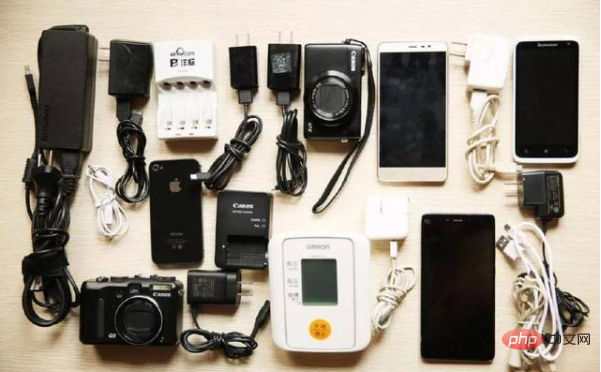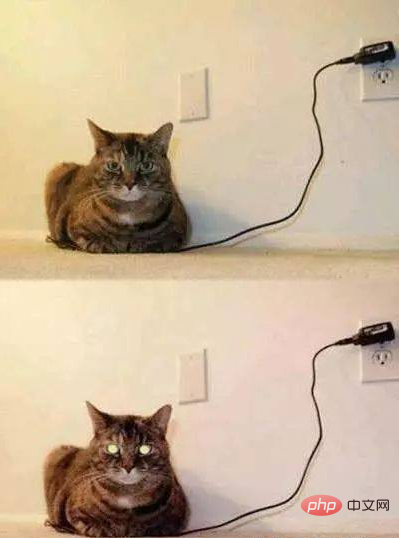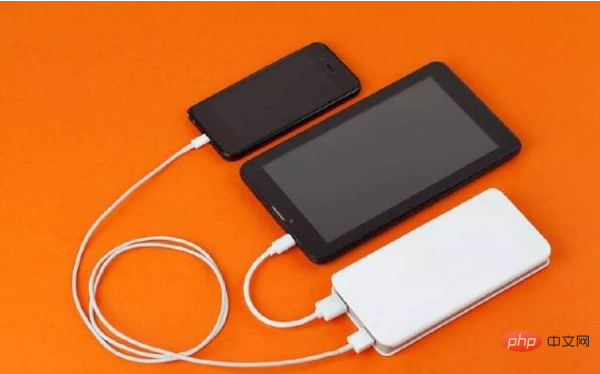
There is a piece of news circulating on the Internet recently:
Please do not use the charger used for tablet computers to charge mobile phones. Although the two have similar appearances, the rated charging voltage They are both 5V, but the charging currents of the two devices are blocked. According to the formula P=UI, the power of the devices is also different. Therefore, taking the risk of making such a move may cause excessive current to breakdown the key capacitor, which will damage the phone. , also damaged the flat plate, resulting in heavy losses.

It seems that there is some truth to what I said. So, as a viewer, maybe the mobile phone you are using is in the above situation. Do you feel like hearing such remarks? My heart is tense, and I can't help but feel a little panicked and uneasy?
Related recommendations: "php Basic Tutorial"
This sentence can be regarded as fart. I think this statement can only be used by some children who have no common sense. , but it is completely "irrational" to judge this matter based on the charger parameters and electrical formulas. In a true sense, if you want to know whether a tablet charger can charge a mobile phone, you must first truly understand how the charger works.

How does the charger work?
One end of the charger plug is connected to a 220V AC socket, and the other end is connected to the device using a dedicated data cable. The main power supply of 220V AC is first converted into high-voltage DC through a rectifier circuit
, and then After passing through the switching tube, it becomes high-frequency and high-voltage pulses, and then converted into low-voltage (such as 5V) pulses through the transformer. The 5V low-voltage pulses then pass through a rectifier and voltage stabilizing circuit and become 5V stable direct current.
In the process of changing from 220V AC to 5V DC, the transformer effect is caused by the three major systems of transformer, rectifier circuit and voltage stabilizing circuit, but it only changes the form of electric energy (from high-voltage AC to low-voltage DC)
But after the user connects the device, the charger starts to carry the load and starts to transmit current at the same time. The current flowing through the charger depends on the status of the load. This can be checked through the formula, so the charger Within the rated capacity, the charger will provide how much current the charging device needs. The current ratio of the charger depends on the electrical appliance itself.
Generally speaking, today's general rechargeable electronic devices are basically equipped with special charging circuits, which can completely limit the current according to the situation. Therefore, there is no need to worry about these problems. In addition, if it is If the mobile phone charger charges the tablet, the mobile phone charger will charge the tablet at the maximum output current, but the charging time will be longer!

As for the rumor that the excessive current breaks down the capacitor mentioned at the end, it makes no logical sense at all. The basic function of the capacitor is to "pass AC and block DC." "The charger inputs 220V AC and outputs 5V DC. The key point is "direct current", so no matter how large the DC current is, it cannot pass through the capacitor, let alone the word "breakdown".
So, if you want to use a tablet charger to charge your mobile phone, I am very responsible to tell you that it is completely feasible and will not cause damage. On the contrary, using a mobile phone charger to charge your tablet is just a matter of charging. It just takes a long time.
After all, there are more chargers nowadays, and it is inevitable that they will be mixed. However, because there are differences in design between brands, if you mix them, try to choose the same brand, and be sure to choose genuine ones. If you use If there is a fake and inferior charger, the problem will not be the price of a mobile phone. Be sure to think twice!
The above is the detailed content of Can a computer charger charge a mobile phone?. For more information, please follow other related articles on the PHP Chinese website!